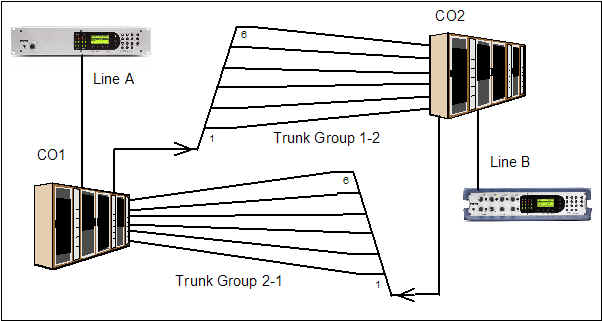Troubleshooting the PSTN
Troubleshooting the Public Switched Telephone Network
(or, how do you tell the Telco that the problem is in their network?)
by Rolf Taylor – Telos Systems, Cleveland, OH
Below we have paraphrased sections from Rolf’s article.
The Public Switched Telephone Network (PSTN) is truly one of the marvels of the 20th century. However, once your line and equipment have been eliminated as the source of problems, troubleshooting can get very difficult. Only by a thorough understanding of the carrier network interconnection (trunking) is it possible to conclusively locate the source of the problem. Moreover, since the Telco is bound to be skeptical, it is best to be sure of the problem before going to them.
In the figure below, telephone device A and device B can call each other. System issues commonly result when two “one-way” hunt groups are built between telephone company central offices. CO1 and CO2 are two central offices. Trunk group 1-2 handles calls from CO1 to CO2. Trunk group 2-1 handles the opposite direction.

A bad trunk in group 1-2 would result in some percentage of failures when A calls B. However, since trunk group 2-1 is unaffected, 100% of calls from B to A will succeed. This one-way behavior, where the direction of the call consistently affects the results, is a classic symptom of network related calling problems
Indicators to carrier network problems (and not premise equipment)
The key to troubleshooting network problems is persistence. You make many test calls and eventually get a call that is different (finally call fails, or finally the call does not fail). This is the behavior to look for…
- The trouble is acting like a network trunking problem in that it is probabilistic (carrier call volume related) rather then absolute (occurs on every call).
- The trouble’s occurrence varies due to time-of-day.
- The trouble’s occurrence statistically varies by call direction. Troubles are greater when A calls B than when B calls A.
